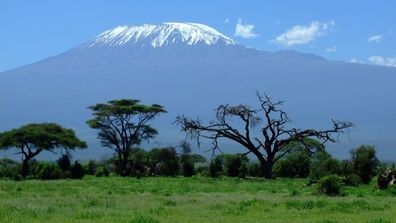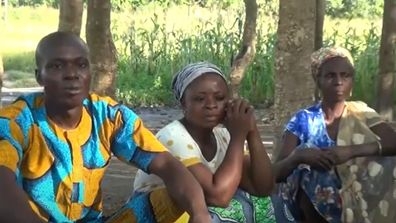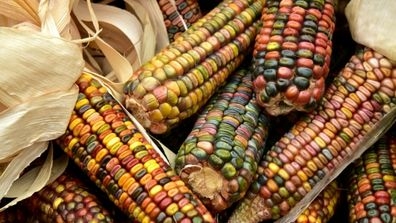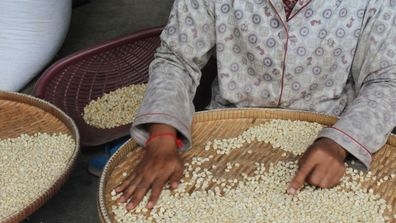This story was originally published by ADB.
Keen on exporting its surplus rice, Cambodia is priming its rice sector to enter the world market while keeping the national stock, farmers' welfare, and agricultural resources in check. Together with the Global Agriculture and Food Security Program and the Strategic Climate Fund under the Climate Investment Fund, ADB is helping the government transform the sector into a commercially oriented industry that is also up to the challenges of climate change.
Rice Basket Potential
Rice farmers in Cambodia have been working very hard in the past few years as the government has laid out plans to promote the country as a “rice basket” and a major rice exporter.
Rice accounts for over 70% of Cambodia’s agricultural cropped areas and about 50% of the agriculture sector output. Production has notably increased in the past 2 decades, with a significant surplus exported mainly to Europe, reaching an encouraging 10% of the market shares.
Recognizing the rice sector’s export potential, the Government of Cambodia legislated its Policy on the Promotion of Paddy Production and Rice Export (2010) to boost the rice sector and bring Cambodian rice to the world market. However, this was a challenge for a country that, despite its surplus rice, experiences a food deficit in about a quarter of its provinces, making food security a concern.
The price of rice fluctuates often because of imbalances in supply and demand, aggravated by the movement of unprocessed rice paddy to Thailand or Viet Nam, which have better processing capacity, bigger storage, and wider distribution systems. Consistency in the quality of rice for export is also wanting because of a lack of postharvest infrastructure and varied production and processing technologies used in large and small farms.
Climate change impacts also pose a threat to rice farming. Cambodia has had its share of an increasing number of extreme climate events such as floods and droughts, which have driven farmers to consider alternate cropping systems. Where water is available, dry season irrigated rice production is adopted as an alternative.
Overall, Cambodia has great potential to become a rice basket in Southeast Asia. However, the country’s outmoded rice value chain needs to be updated if the twin objectives of food security and export expansion are to be achieved.
For Cambodia, reforming its agriculture sector to support rice commercialization is not just an important part of its growth plans, but a critical way to hedge against disasters and climate change impacts.
Chanthou Hem, ADB Senior Project Officer
Transforming the Rice Sector
In 2013, the Government of Cambodia took on $55 million combined policy-based and project loans from ADB and another $24 million combined loans and grants from the Global Agriculture and Food Security Program and the Strategic Climate Fund for the Climate-Resilient Rice Commercialization Sector Development Project. The project was designed to transform the predominantly subsistence rice sector into a commercially oriented industry while taking care of land and water resources.
On the policy side, the project supported the creation of a conducive legal and regulatory environment to bring about rice commercialization. Specifically, the project supported policy reforms that enabled better local seed production and distribution and more optimal agricultural land management, enhanced domestic trading and export of milled rice and strengthened farmers’ organizations.
The project financed the development of climate-resilient rice value chain infrastructure, particularly in the three major rice-producing provinces of Battambang, Kampong Thom, and Prey Veng. These included the rehabilitation of climate-proofing irrigation systems, the construction of paddy drying and storage facilities, and the construction of seed processing and storage facilities. These high-priority investments increased productivity, improved rice processing and storage within the country, and raised the quality and consistency of rice for export.
The project established land-use zones; updated rice ecosystems, soil classification, and land-use maps to identify higher-yielding rice-growing areas; and incorporated agro-ecosystem analyses into land-use plans. Capacity-building activities for the Ministry of Agriculture, Forestry and Fisheries and the Ministry of Land Management, Urban Planning and Construction were conducted so they can jointly undertake agricultural land use planning.
To improve the quality of milled rice and enhance Cambodia’s participation in export markets, the project also financed related support services to enhance the rice value chain. These included improving the availability and quality of commercial rice seed, upgrading technical extension material to guide production in various rice ecosystems, capacity building of mill managers and operators, and facilitating access to credit by farmers, traders, and millers.
A weather-indexed crop insurance scheme was piloted in selected areas in the three project provinces to stimulate further commercialization. Such a system would reduce risks associated with paddy production, allow farmers to adopt modern production technologies, and extend their longer-term planning horizon.
“For Cambodia, reforming its agriculture sector to support rice commercialization is not just an important part of its growth plans, but a critical way to hedge against disasters and climate change impacts,” said Chanthou Hem, senior project officer, ADB.
Export-ready
While the project is expected to be completed by 2023, it has already achieved some noteworthy milestones. Paddy production in Cambodia has increased from 8 million tons in 2012 to 10.9 million tons in 2020. The target provinces now produce about 2,493 tons of fragrant rice seed annually. And about 18,586 hectares are now served by climate-resilient rehabilitated irrigation schemes.
However, in 2020, the COVID-19 pandemic caused severe disruption in logistics and supply chains. These reduced farm productivity and increased farm production costs, worsening the farmers’ financial situation and weakening their resilience to climate shocks. The project mitigated some of the COVID-19 impacts by increasing the net income of stakeholders along the rice value chain; boosting rice farmer incomes through jobs in infrastructure subprojects and rice seed production activities; and enhancing rice seed production, which helped ensure access to affordable quality rice seeds by farmers during the pandemic.
In January 2022, the Global Agriculture and Food Security Program provided $3.8 million in additional financing to expedite recovery from the pandemic and rebuild farmers’ resilience to both economic and climate shocks. This second grant will help Cambodia’s rice producers increase incomes and climate resilience by addressing logistics and supply chain disruptions caused by COVID-19 and will benefit about 22,000 smallholder rice farmers.




